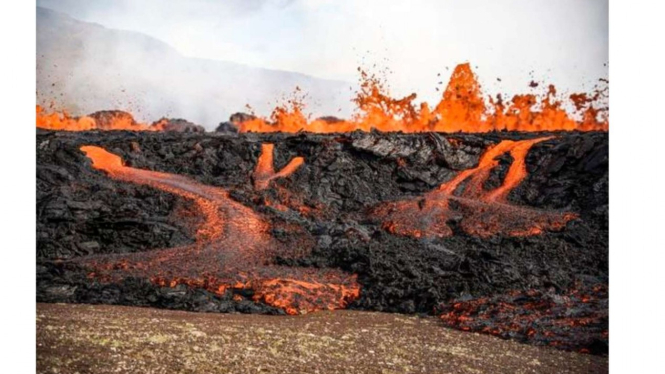Fagradalsfjall Volcano Erupts After 870 Years Quiet Period
- theatlantic.com
VIVA – Volcanic eruptions are one of the most frightening natural disasters or phenomena. Recently, one of major volcanoes, Fagradalsfjall volcano in Iceland erupted on August 3, 2022 after 870-years quiet period.
A new volcanic eruption began in the Fagradalsfjall fissure zone on Iceland's Reykjanes Peninsula. As quoted from ABC News, the recent eruption occurred after a period of calm for 870 years in the Krysuvik volcanic system, Trolladyngja. This volcanic system consists of two groups of rifts or shoals, named Fagradalsfjall and Krysuvik.
The eruption site is located in the Meradalir Valley about one kilometer northeast of last year's eruption in the Geldingadalir Valley.
In the morning, an earthquake with a magnitude of 4.6 shook the location. Approximately one hour later, the eruption occurred. The eruption of the volcanic fissure is about 100 to 200 meters long, leaving fresh magma above the lava field.
Para ahli menggunakan pelindung tubuh di area Gunung Berapi Fagradalsfjall.
- theatlantic.com
The International Maritime Organization (IMO) has urged residents and tourists not to go near Mount Fagradalsfjall, which is only about 20 miles south of the country's capital, Reykjavik, and nearby Keflavík Airport.
According to the IMO statement, the volcanic gases produced by eruptions in the area could be dangerous. The IMO has recorded more than 3,000 earthquakes in the past week, the strongest being the 5.4 magnitude quake recorded on July 31 in the northeast of Grindavík.
"There are indications that deformation and earthquakes have decreased and this has been preceded by an eruption that began on March 19, 2021," the IMO said in a statement.
"Given all of the above, the possibility of an eruption at Fagradalsfjall, in the near future is considered important." continued the statement.
Because of this, there were three tourists who were recorded as being injured. According to The New York Times, three tourists were injured in Iceland on Wednesday night, August 5, 2022, as they walked across rough terrain towards a volcanic eruption that drew tourists' attention, to the red-hot lava shaped like a fountain.
This was said by a spokesman for Iceland's civil protection agency, Hjordis Gudmundsdottir.
Injuries were not serious, including broken ankles, but they continued to warn that the risks tourists faced if they tried to climb into the lava flowing from the Fagradalsfjall volcano would be dangerous.
"We tell people that, even though we know this is a spectacular natural phenomenon and there's nothing else like it, we should always be careful, and we should always be 100 percent prepared before going to such a place," Gudmundsdottir said.





















